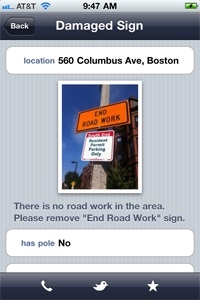
Americans are more mobile than ever and what a change that is creating for public entities. More than 90 percent of the United States population own cell phones and more than half have smartphones, according to Pew Research. Mobile devices have become the #1 choice for communicating with government – and public officials have taken note. In most cities and states, people communicate with governmental entities in hundreds of ways.
Some snap a picture on their phone and then report potholes that are dangerous; others comment on policy. Thousands of citizens now make transactions, request information or renew licenses online. Very few prefer to visit a governmental entity in person.
Boston is known to be the first city to use a mobile app, aptly titled Citizens Connect. Designed in 2009, the app is similar to 311 because it allows residents to report non-emergency issues to local officials. Each communication receives a tracking number and citizens are updated as time passes. People liked these apps very much, so it did not take long for other cities to implement similar apps. Philadelphia’s 311 and Oakland’s Mobile Citizen are look-alike apps.
The federal government has also developed a slew of helpful applications for the public. The American Red Cross has four apps related to natural disaster relief, as well as one for the Federal Emergency Management Agency (FEMA). Even the Bureau of Engraving and Printing has an app called EyeNote that was developed for blind or visually impaired citizens.
While there are thousands of government apps, some of the most common ones are mobile apps offered by transit systems. Individuals in the millennial generation prefer to live in dense, urban spaces and they use public transportation so they definitely want the ease of scheduling and buying tickets through technology. Atlanta, Boston, Salt Lake City, Dallas, Denver, Seattle and San Francisco have all taken measures to develop and implement apps that increase ridership and ease for citizens.
Interestingly enough, as transit interactions via apps increased, many transit authorities began to expand their citizen offerings. Many now offer car2go, Auto-mobile, and Communauto apps. Google continues to be a major player because of its free Google Maps. New York City has an app called NYC Accessible that provides riders with disabilities critical information to determine where accessible stations are, and which have escalators and elevators – and if the lift systems are working.
It is truly a changing world and government apps are well received throughout the country. Most believe we’ve seen only a tiny tip of a very large iceberg. For the latest updates and additional government trends, continue to follow our SPI Insights.

